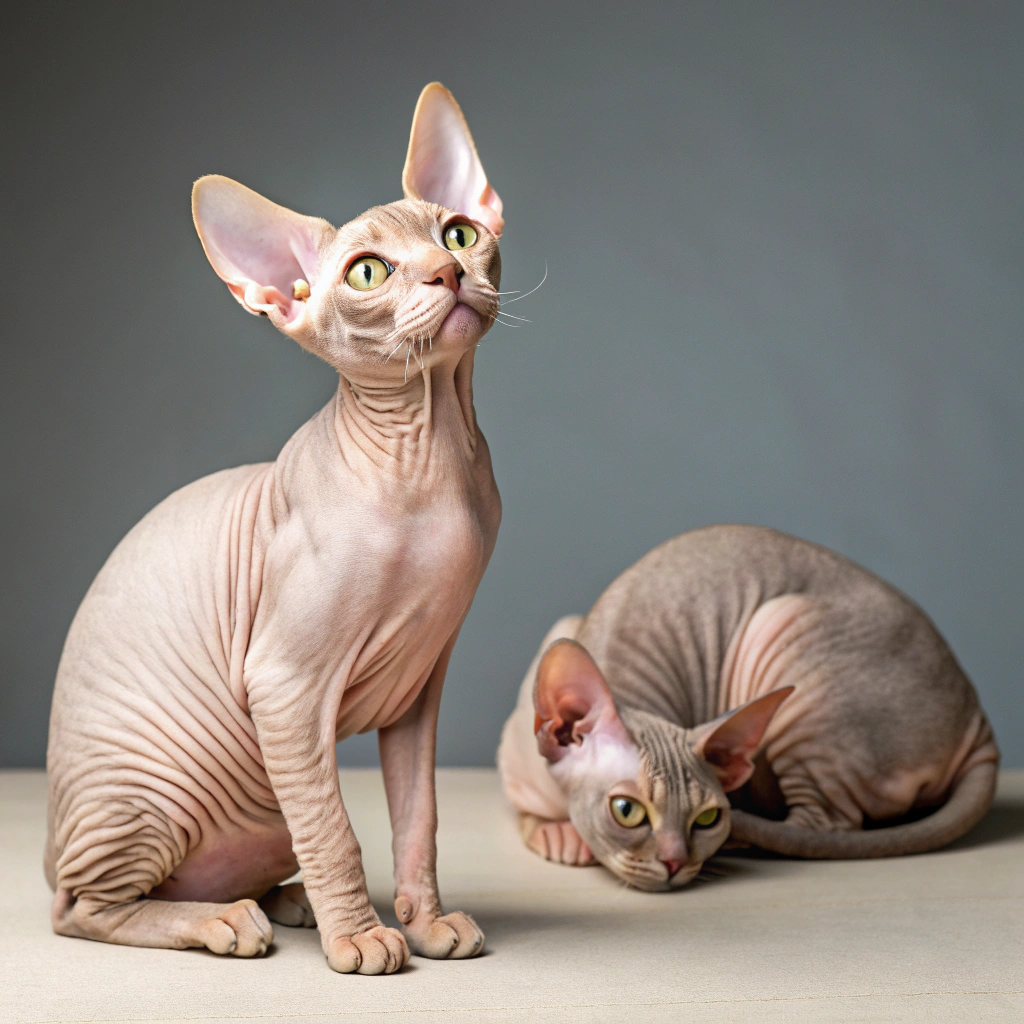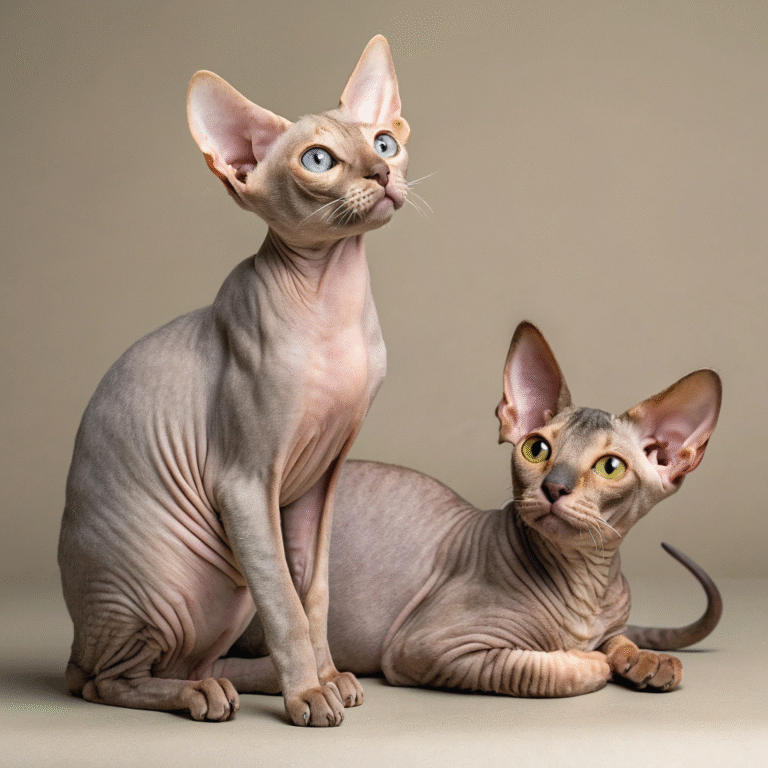You might picture fluffy furballs lounging in the sun. But if you’ve encountered a Sphynx cat, you might have been taken aback by its unique appearance. Some people find these cats to be ugly, and in this article, we’re going to dive deep into why that might be. We’ll explore everything from their physical traits to the reasons behind their unconventional looks.
What Makes Sphynx Cats Unique?
The Sphynx cat stands out in the feline world due to its distinctive lack of fur. Instead of a fluffy coat, Sphynx cats have a skin that’s often compared to the texture of a peach or a warm, soft suede. This unique characteristic leads many to label them as “ugly,” but is it really fair to judge their beauty on this alone?
The Origins of the Sphynx Cat
The History Behind the Sphynx Breed
Sphynx cats have a fascinating history that dates back to the 1960s. Originally discovered in Canada, these cats were the result of a natural genetic mutation that caused hairlessness. Breeders took these hairless cats and began working to refine the breed, leading to the Sphynx we recognize today. Their origin story is as unusual as their appearance!
The Genetics of Hairlessness
The lack of fur in Sphynx cats is due to a genetic mutation affecting their hair follicles. This mutation results in a cat that, while hairless, still has a layer of fine, downy fuzz. This gene, known as the hr gene, is recessive, meaning that both parent cats must carry the gene for their kittens to be hairless. It’s this mutation that contributes to their unique and sometimes controversial look.
Physical Traits That Make Sphynx Cats Stand Out
Skin Texture and Appearance
One of the most striking features of Sphynx cats is their skin. With no fur to hide behind, their skin becomes a prominent aspect of their appearance. Their skin can range from smooth to slightly wrinkled, with visible folds and sometimes even a bit of oiliness that requires regular cleaning. This bare skin can be a factor in why some find Sphynx cats less attractive.
Facial Features: Love Them or Hate Them
The face of a Sphynx cat is quite distinctive, characterized by large, bat-like ears, prominent cheekbones, and a pronounced nose. Some people find these features endearing, while others see them as unusual or off-putting. It’s this stark departure from the traditional cat aesthetic that often sparks debate about their looks.
Body Structure and Size
Sphynx cats have a muscular, medium-sized build. They are well-defined and have a robust body despite their lack of fur. Their slender, elongated legs and lean body make them appear almost alien-like. This unusual physique contributes to their overall appearance, which some might perceive as “ugly.”
Common Misconceptions About Sphynx Cats
The Myth of “Ugly” Pets
Calling Sphynx cats ugly is often a matter of personal opinion and societal standards of beauty. Many people equate beauty with traditional furry coats and familiar features. However, beauty is subjective, and what might seem unattractive to one person can be incredibly charming to another. Sphynx cats, with their unique looks, are just a different kind of beautiful.
Health Concerns and Maintenance
Caring for a Hairless Cat
One reason some people might find Sphynx cats less appealing is the additional care they require. Their lack of fur means they don’t have the natural oils and protection that other cats do. Regular bathing is necessary to remove excess oils and keep their skin healthy. This extra maintenance can be a downside for some potential cat owners.
Health Issues Common to Sphynx Cats
Sphynx cats are generally healthy but can be prone to specific health issues due to their unique physiology. They might experience skin problems, including rashes and fungal infections, and are also more susceptible to temperature extremes. These health concerns might contribute to the perception of Sphynx cats as less attractive to some people.
The Personality of a Sphynx Cat
What Are Sphynx Cats Like to Live With?
Despite their unconventional appearance, Sphynx cats are known for their warm and affectionate nature. They are often described as “dog-like” due to their sociable and playful behavior. Their lack of fur also means they seek out warmth and cuddles more than other cats, making them excellent companions. Their endearing personalities can often outweigh their unusual looks.
The Role of Personal Preference
Why Beauty is in the Eye of the Beholder
It’s crucial to remember that beauty is highly subjective. What one person might view as ugly, another might find fascinating or endearing. Sphynx cats are a perfect example of this diversity in taste. They offer a unique combination of traits that can appeal to those who appreciate the unconventional.

The Cultural Impact of Sphynx Cats
Sphynx Cats in Popular Culture
Sphynx cats have made their mark in popular culture, often appearing in movies, TV shows, and social media. Their unusual looks have made them memorable and often beloved by those who appreciate their unique charm. This cultural presence has helped reshape the narrative from one of “ugliness” to one of fascination.
In conclusion, the perception of Sphynx cats as “ugly” is largely a matter of personal perspective and societal standards. Their distinctive appearance, including their hairlessness and unique facial features, sets them apart from more traditional breeds. However, their endearing personalities and affectionate nature often make them beloved pets despite their unconventional looks. Beauty, after all, is in the eye of the beholder, and Sphynx cats offer a different kind of charm that many people find irresistible.
FAQs
1. Are Sphynx cats hypoallergenic?
Sphynx cats are not completely hypoallergenic, but they tend to produce fewer allergens compared to other breeds. Their lack of fur means less dander, but they still require regular cleaning to manage oils on their skin.
2. How often should you bathe a Sphynx cat?
Sphynx cats should be bathed about once a week to remove excess oils from their skin. Regular bathing helps prevent skin issues and keeps them clean.
3. Do Sphynx cats get cold easily?
Yes, Sphynx cats can get cold more easily than other cats because they lack fur. It’s a good idea to provide them with warm bedding and, in colder climates, consider a cat sweater.
4. What are some common health issues in Sphynx cats?
Common health issues in Sphynx cats include skin problems, respiratory issues, and susceptibility to temperature extremes. Regular vet check-ups can help manage these concerns.
5. How long do Sphynx cats typically live?
Sphynx cats have a lifespan similar to other domestic cats, averaging around 12 to 15 years, with some living even longer with proper care and a healthy lifestyle.

